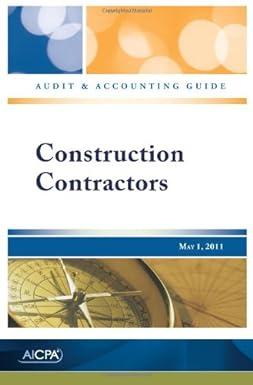Answered step by step
Verified Expert Solution
Question
1 Approved Answer
f. Calculate the price/earnings ratio for the most recent year, using the company's year-end market price per share of common stock in the numerator and
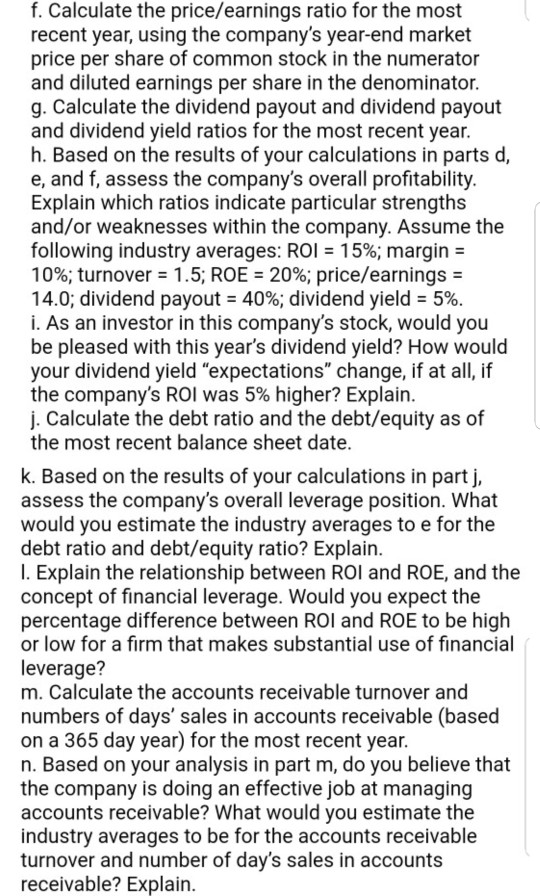
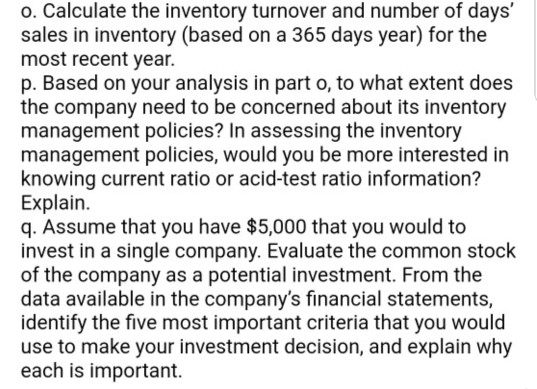
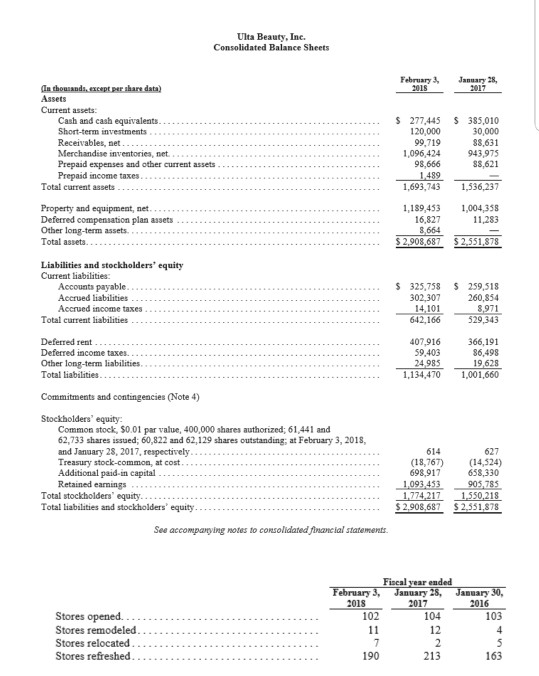
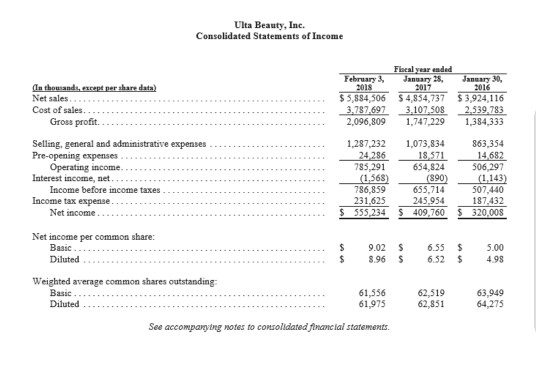
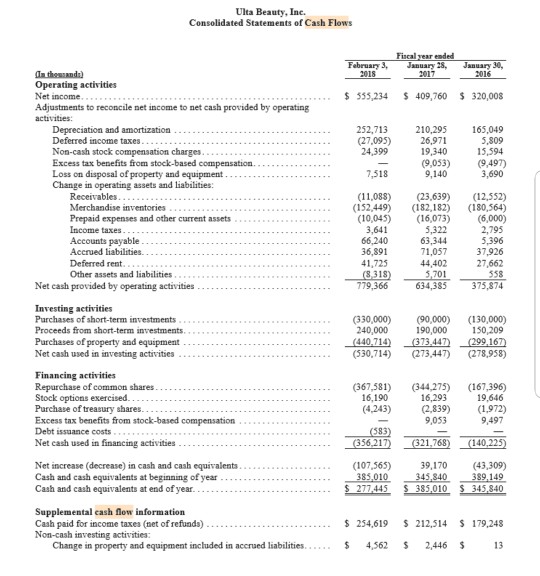
f. Calculate the price/earnings ratio for the most recent year, using the company's year-end market price per share of common stock in the numerator and diluted earnings per share in the denominator g. Calculate the dividend payout and dividend payout and dividend yield ratios for the most recent year. h. Based on the results of your calculations in parts d, e, and f, assess the company's overall profitability Explain which ratios indicate particular strengths and/or weaknesses within the company. Assume the following industry averages: R01-15%; margin- 10%, turnover : 1.5; ROE> 20%; price/earnings- 14.0; dividend payouts 40% dividend yield : 5% i. As an investor in this company's stock, would you be pleased with this year's dividend yield? How would your dividend yield "expectations" change, if at all, if the company's ROI was 5% higher? Explain. j. Calculate the debt ratio and the debt/equity as of the most recent balance sheet date. k. Based on the results of your calculations in part j, assess the company's overall leverage position. What would you estimate the industry averages to e for the debt ratio and debt/equity ratio? Explain I. Explain the relationship between ROI and ROE, and the concept of financial leverage. Would you expect the percentage difference between ROI and ROE to be high or low for a firm that makes substantial use of financial leverage? m. Calculate the accounts receivable turnover and numbers of days' sales in accounts receivable (based on a 365 day year) for the most recent year. n. Based on your analysis in part m, do you believe that the company is doing an effective job at managing accounts receivable? What would you estimate the industry averages to be for the accounts receivable turnover and number of day's sales in accounts receivable? Explain f. Calculate the price/earnings ratio for the most recent year, using the company's year-end market price per share of common stock in the numerator and diluted earnings per share in the denominator g. Calculate the dividend payout and dividend payout and dividend yield ratios for the most recent year. h. Based on the results of your calculations in parts d, e, and f, assess the company's overall profitability Explain which ratios indicate particular strengths and/or weaknesses within the company. Assume the following industry averages: R01-15%; margin- 10%, turnover : 1.5; ROE> 20%; price/earnings- 14.0; dividend payouts 40% dividend yield : 5% i. As an investor in this company's stock, would you be pleased with this year's dividend yield? How would your dividend yield "expectations" change, if at all, if the company's ROI was 5% higher? Explain. j. Calculate the debt ratio and the debt/equity as of the most recent balance sheet date. k. Based on the results of your calculations in part j, assess the company's overall leverage position. What would you estimate the industry averages to e for the debt ratio and debt/equity ratio? Explain I. Explain the relationship between ROI and ROE, and the concept of financial leverage. Would you expect the percentage difference between ROI and ROE to be high or low for a firm that makes substantial use of financial leverage? m. Calculate the accounts receivable turnover and numbers of days' sales in accounts receivable (based on a 365 day year) for the most recent year. n. Based on your analysis in part m, do you believe that the company is doing an effective job at managing accounts receivable? What would you estimate the industry averages to be for the accounts receivable turnover and number of day's sales in accounts receivable? Explain
Step by Step Solution
There are 3 Steps involved in it
Step: 1

Get Instant Access to Expert-Tailored Solutions
See step-by-step solutions with expert insights and AI powered tools for academic success
Step: 2

Step: 3

Ace Your Homework with AI
Get the answers you need in no time with our AI-driven, step-by-step assistance
Get Started


